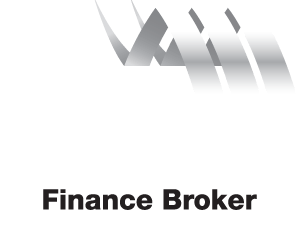A Comprehensive Guide to Navigating the Easter Finance and Property Investment Landscape
Happy Easter to you and your family!
As we all look forward to a well-deserved break this Easter, the economic landscape is showing promising signs for both finance enthusiasts and property investors. With inflation on a slow decline and interest rates holding steady, the anticipation of an interest rate cut later this year grows. This optimism is bolstered by insights from economists and banking experts, whose continuous updates keep us informed and prepared for future financial planning.

The Current Finance Climate: An Overview
On the finance front, we're observing a favourable trend with home loan rates currently ranging from the high 5% to the low 6%, varying by client and deal specifics. This marks an improvement, making the cost of borrowing more accessible for many. Additionally, fixed interest rates have seen a drop, now offering a competitive edge over variable interest rates.
Investment lending on a principal and interest (P+I) basis slightly exceeds home loan rates, with interest-only loans attracting a higher margin. Despite these variances, our commitment remains strong in negotiating the best possible rates for our clients. Financial flexibility has also seen improvement; financiers are now accommodating self-employed applicants with simpler requirements, such as BAS statements or the option between financials or tax returns for loan servicing.
Seeking Your Next Investment: Macro and Micro Factors
When it comes to property investment, the decision-making process is multi-faceted. Here's a breakdown of the critical macro and micro factors to consider:
Macro Factors:
- Population Growth: Target the top 50 markets by population to narrow down potential investment locations.
- Property Cycle: Align your purchase timing with both your readiness and the optimal phase in 'The Property Clock.'
- Supply and Demand: Factors like government land releases, employment opportunities, and general appeal affect market demand and property prices.
- Unemployment Rates: High unemployment can challenge property investment, highlighting the importance of location selection.
- Economic Strength: Diversified and burgeoning industries indicate a robust economic environment for property investment.
- Government Spending: Infrastructure developments can significantly impact property values and investment opportunities.
- Lending Conditions: Interest rates and lending regulations can facilitate or hinder investment opportunities.
Micro Factors:
- Vacancy Rates: Trends in vacancy rates offer insights into market demand and potential supply issues.
- Affordability: Understanding the market's affordability can guide investment decisions.
- Demographics: The local population's characteristics influence the types of properties in demand.
- Sales Data: Historical sales data provides a benchmark for potential investment performance.
- Suburb Stigma: Public perception can impact property values and investment viability.
- Walkability and Access: Properties in accessible areas tend to attract higher demand.
- Income Levels: Higher local incomes can lead to property upgrades, boosting area values.
- Family-Friendliness: Family-oriented amenities can make suburbs more attractive to potential buyers.
- Location Dynamics: Growth impacts all areas of a suburb, regardless of perceived desirability.
- Property Demand: Identifying undersupplied property types can reveal lucrative investment opportunities.
In Closing
As we navigate through these promising yet complex times, it's essential to stay informed and prepared. Whether you're pondering over your next investment move or seeking financial advice, remember that our team is here to support you every step of the way.
Wishing you a joyous Easter and successful investment journey ahead. Until next time, take care.
Happy Easter, Medicoloan
Q&A Section
Q: Will interest rates go down this year?
A: Given the current economic indicators, such as steady interest rates and slowing inflation, there is optimism for a potential interest rate reduction later in the year.
Q: How are fixed interest rates compared to variable rates?
A: Fixed interest rates have recently dropped, making them now competitive with variable interest rates, offering a viable option for those seeking stability in their repayments.
Q: What are some key factors to consider when looking for a property to invest in?
A: Investors should consider both macro factors, such as population growth and economic strength, and micro factors, including vacancy rates, affordability, and local demographics, to make informed decisions.
Q: How can I find the best interest rate for my home loan?
A: Working with financial professionals can help you negotiate and obtain the best possible interest rates, as they have the expertise and contacts to navigate the finance landscape effectively.

